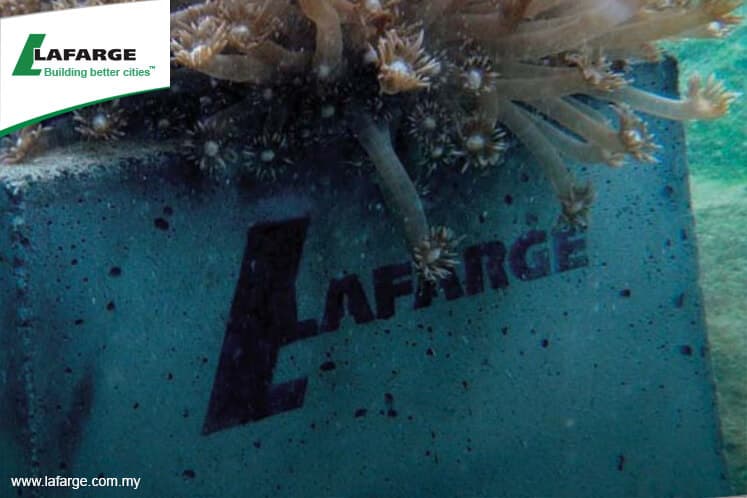
KUALA LUMPUR (May 23): The country's bloated cement market is expected to continue its downward trend this year, but the contraction is anticipated to narrow 4%-5% this year from the 6%-7% decline seen in 2016, said Lafarge Malaysia Bhd president and managing director Thierry Legrand.
Last year's contraction was the first decline in the country's cement sector, following uninterrupted growth in the last six years since 2009, he added.
Legrand blamed the weak cement market on the increase in the production capacity, together with a conflation of events that have resulted in severe price erosion amid intense competition.
"We saw the cement market shrink in 2016 with excess capacities from players creating imbalances in the market which impacted sales volume with further pricing pressures," Legrand told reporters after Lafarge's 67th annual general meeting here today.
A French national, Legrand said the country's excess cement capacity is the main culprit that dragged down Lafarge's earnings since the second of quarter of financial year ended Dec 31, 2016 (2QFY16).
Yesterday, Lafarge reported a net loss of RM48.93 million for 1QFY17 — its first loss-making quarter since 2QFY05 — from a net profit of RM20.65 million a year ago.
The latest net loss was on the back of lower quarterly revenue, which dropped 16.1% to RM561.85 million in 1QFY17 from RM669.78 million previously.
Legrand declined to provide guidance on Lafarge's pace to earnings recovery, and would only say that it expects the operating environment to pick up speed from the second half of this year, led by ongoing large infrastructure projects such Sungai Besi-Ulu Kelang (SUKE) expressway, Mass Rapid Transit 3 and Light Rail Transit.
"Personally, I believe the cement market will recover but as to when Lafarge's earnings will recover, that is a hard question to answer," said Legrand.
Lafarge controls 45% of the cement production capacity — the largest in the country.
"In the meantime, we are doing our best to reduce our costs such as fixed cost, sales and distribution costs, and improve our efficiencies," he said.
To better manage its expenses, Legrand said Lafarge will deliver cement to the central region from its plants in Rawang and Kanthan, Perak, instead of from its plant in Langkawi, which will be more focused on exporting its products to markets such as Bangladesh, Myanmar and Indian Ocean countries.
"Lafarge has also negotiated for a lower freight cost from Langkawi to Pasir Gudang in view of larger clinker volume transported," he said, noting that Lafarge exports 5% to 15% of its total production volume.
Lafarge currently owns three integrated cement plants in Langkawi, Kanthan and Rawang. It also operates two grinding stations in Pasir Gudang, Johor.
Legrand said Lafarge had been busy integrating its operations in the southern region, as it recovered more of its fixed cost by using clinkers in Langkawi for its grinding stations in Pasir Gudang, Johor, which resulted "in partially mothballing" its kilns.
"We have improved the utilisation of our asset network through de-bottlenecking project to significantly improve our cost, and service within the peninsular market," he said.
At the same time, Legrand added that Lafarge hopes to secure long-term contracts to supply its cement products to Country Garden Pacific View Sdn Bhd, the master developer of the mammoth US$100 billion Forest City project in Johor.
In March, Lafarge had at the Specialised Building Materials Supply Chain Conference 2017 inked a memorandum of understanding with Country Garden to supply cement and other products for the Forest City project.
"A long-term contract is good for us. For now, we are supplying cement products to Forest City developers on short-term basis," added Legrand.
Lafarge's counter closed 38 sen or 6.61% lower at RM5.37, for a market capitalisation of RM4.56 billion.